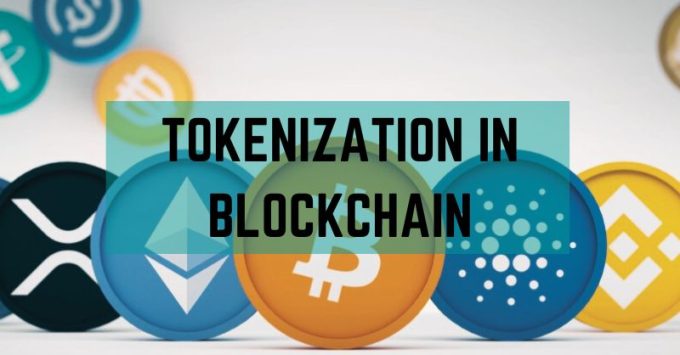Tokenization refers to converting rights to an asset into a digital token on a blockchain network. It involves creating a digital representation of a real-world, tangible, or intangible asset on a blockchain. This includes anything from real estate, art, and commodities, to stocks, bonds, and even personal identification. Tokenization utilizes blockchain technology’s security, transparency, and immutability to facilitate and record transactions.
Understanding Tokenization
In the crypto world, a token is described as a unit of value issued by a project or company based on an existing blockchain. Tokens are often created and distributed through Initial Coin Offerings (ICOs) or similar mechanisms. While it’s true that tokens reside on top of a blockchain, they are typically created using a standard template on a particular blockchain like Ethereum (using ERC-20 or ERC-721 standards, for instance). This allows them to utilize the underlying blockchain’s technology without needing to create their blockchain.
The distinction between a coin and a token is important. Coins are native to their blockchain (like Bitcoin or Ethereum), meaning they are created by and used as the primary currency of a blockchain. Tokens, on the other hand, are built on top of another blockchain and are not the native currency of that blockchain. They often represent assets or utilities and are created through smart contracts.
Additionally, tokens represent an investor’s stake in a project or a company, but not all tokens are designed for this purpose. Tokens may have a distinct value from the cryptocurrency of the blockchain on which they are based. It depends on the token’s purpose and market demand.
Types of Tokens
There are various types of tokens. Some of the popular tokens are:
Utility Tokens
Utility tokens provide future access to a product or service. The project issuing them develops these tokens as digital coupons for their services, rather than designing them as investments. Utility tokens grant access to certain functionalities of a blockchain project, like voting rights, or a service within the project.
Security Tokens
Security tokens are digital assets that derive their value from an external and tradable asset. They are subject to federal laws that govern securities which makes them similar to digital shares of a company. They also represent an ownership position in a corporation, a creditor relationship with a governmental body or corporation, or rights to ownership as represented by an option.
Reward Tokens
Reward tokens incentivize certain behaviors or participants in a blockchain. You can exchange them for other types of tokens or use them for various services or privileges within the blockchain.
Non-Fungible Tokens (NFTs)
NFTs represent a unique digital item or asset and are not interchangeable. Each NFT has distinct characteristics and often represents ownership of a specific item or piece of content, such as digital art, collectibles, music, or videos. NFTs are typically built using a standard like ERC-721 on the Ethereum blockchain, which enables the creation of unique tokens.

How Tokenization Works?
Tokenization is a multi-step process that transforms the rights to an asset into a digital token. Here’s a simplified overview of how tokenization works:
-
Asset Selection:
First, choose an asset tokenization. This asset can be anything of value such as real estate, artwork, a financial instrument, or even intellectual property.
-
Legal Framework and Compliance:
Before tokenizing the asset, it’s crucial to establish a legal framework. This involves complying compliance with relevant regulations such as securities laws, anti-money laundering (AML) rules, and Know Your Customer (KYC) policies. A separate legal entity, such as a special purpose vehicle (SPV), takes ownership of the asset through a transfer.
-
Asset Valuation:
To determine the pricing and issuance of tokens, evaluate the market value of the asset.
-
Token Creation (Issuance):
The following two points explain the creation of tokens:
- Smart Contract Development: On a blockchain, you write and deploy a smart contract that governs the terms of the token, including the total supply, transferability, and any rights or benefits they offer to the holder.
- Token Issuance: The blockchain creates tokens that represent shares of assets. Each token represents a fraction of the value of the asset.
-
Token Distribution and Sale:
The two following points explain the distribution and sale of tokens:
- Initial Offering: A mechanism like an initial coin offering (ICO) or security token offering (STO) sells the tokens.
- Investor Participation: Interested investors purchase these tokens using cryptocurrency or fiat currency.
-
Secondary Market Trading:
Once issued, these tokens are traded on secondary markets which provides liquidity to token holders. This means investors can buy and sell tokens among themselves.
Final Words
Tokenization could revolutionize how we manage assets by allowing us to buy and sell them on the blockchain. It is an area of interest and development in the field of blockchain technology and finance.

